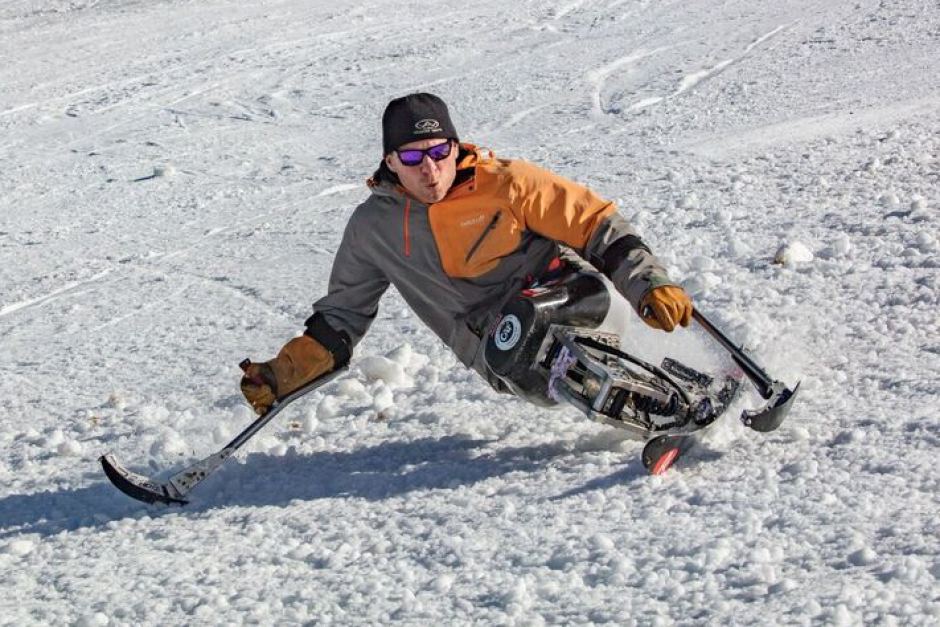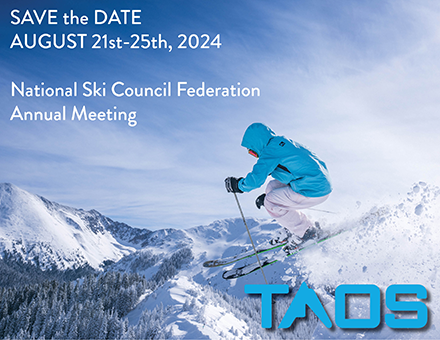 Sit skier Jason Sauer trains at Mount Hotham, in Victoria’s north-east.
Sit skier Jason Sauer trains at Mount Hotham, in Victoria’s north-east.
Ground-breaking osseointegration surgery has returned Jason Sauer to a level of movement not experienced since a near-fatal heroin overdose nearly seven years ago.
In Canada on Christmas Day 2010, Sauer underwent life-saving surgery in which both his legs were removed after the overdose.
After a year of experiencing depression and grief due to the loss of his limbs, Sauer travelled to Park City, Utah to learn how to bobsled and sit ski with the National Ability Centre, and has since progressed to competitive ski racing.
Sauer has trained at Mount Hotham, in north-eastern Victoria, for the past six seasons.
It is a snow resort he and his brother visited as kids when their Austrian-born father worked for a lift company in the early 1980s.
After spending 15 months in a wheelchair, Sauer became a candidate for an experimental form of osseointegration surgery — in which a prosthetic is attached directly to the limb — when he met Sydney-based surgeon Munjed Al Muderis in 2012.
Sauer was subsequently fitted with sockets and legs by the Hanger Clinic, an orthotics and prosthetics company based in Oklahoma City.
After walking around in short, stubby legs for a year, Sauer had microprocessor knee units fitted, before receiving the osseointegration surgery last spring.
He then spent a further two months in a NSW rehabilitation facility, learning to manage the physical pain of load bearing and forces coming straight into the bone instead of wearing prosthetic sockets.
“It’s been a life changer. And as the pain subsides, it seems a more anatomically correct way of attaching prosthetics,” Sauer said.
He can attach different detachable legs for different situations, although he finds the shorter legs are the most practical for getting around in the snow, and crab crawling upstairs, because they place him at a lower centre of gravity.
Although they still cause him pain, Sauer uses a taller set of legs that contain hydraulic knee units in more controlled, flat terrain environments.
Standing up brings health benefits
While he admitted getting around in a wheelchair would offer him greater travel speed in some situations, being able to stand upright had greater benefits to his overall health.
“It’s good for my bone density to be putting weight through the bones,” he said.
“It’s good to be standing for internal organs rather than sitting all the time.
“And even though I might be slower in some areas, I can access more terrain.”
While he has spent much of the year recovering from the osseointegration surgery, Sauer visited Europe for the Para Bobsled Racing championships, in which he was ranked 15th in the world.
He is currently running a fundraising campaign through the Australian Sports Foundation website to support his next winter of bobsled and ski racing events in the northern hemisphere.
Sauer said he encouraged other people with an acquired injury or disability to experience the joy and freedom that snow sports could bring, by contacting Disabled Winter Sports Australia.
Many ski resorts are now accessibility conscious and can provide adaptive ski equipment for visitors with disabilities.
“Skiing is a level playing field. I can ski with my able-bodied friends in the same environment,” he said.
“I don’t feel like I have mobility issues when I’m skiing. When I’m skiing I can keep up.
ABC Gippsland By Rachael Lucas
August 14, 2017



